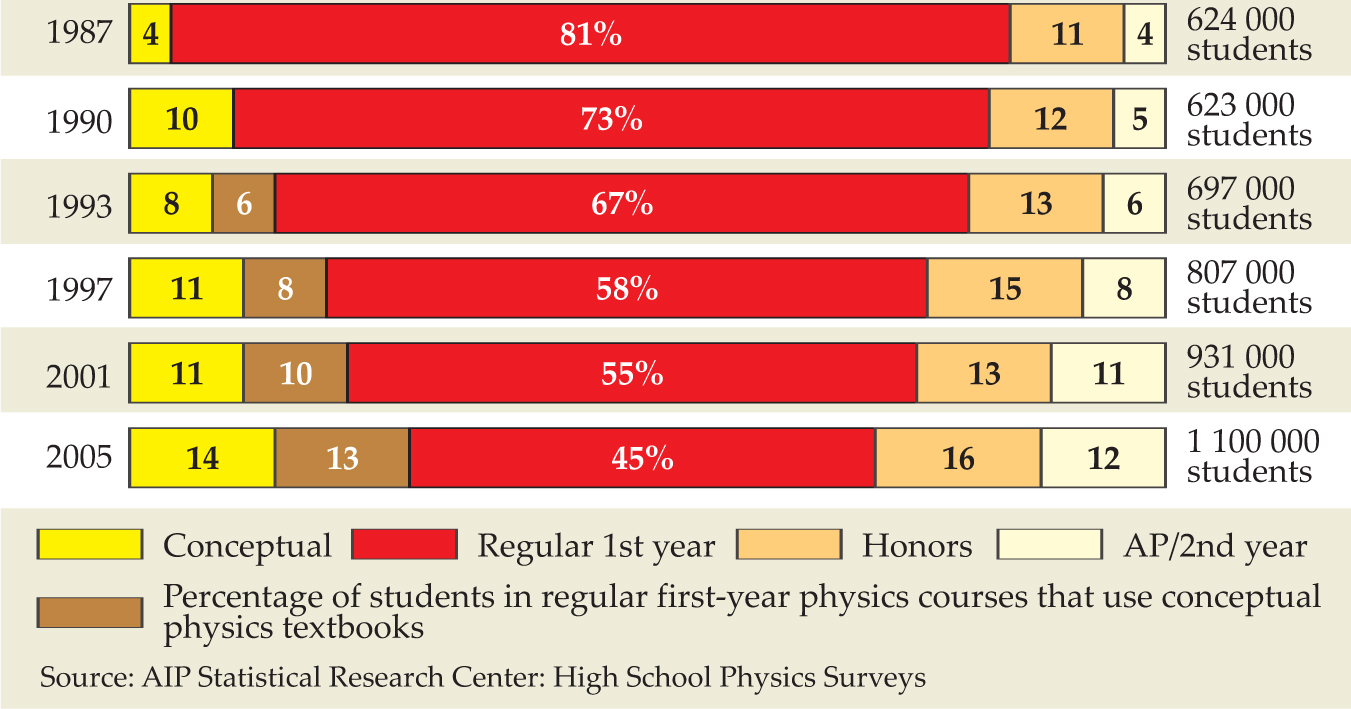More physics in US high schools
DOI: 10.1063/1.2718752
US high-school students are taking physics in unprecedented numbers. And the upward trend in enrollments is likely to continue. These and other findings from a new statistics study by the American Institute of Physics were presented in January at a joint meeting of the American Association of Physics Teachers and the American Astronomical Society in Seattle.
In 2005 33% of all graduating high-school seniors had taken a physics class, up from 20% in 1987. “Now more than half of four-year college- and university-bound students take it,” says Michael Neuschatz, coauthor of the AIP study. “When we look at the forces that are propelling the rise, it looks like the rise will continue.”
Those forces include states’ raising the science requirement for graduation, colleges and universities increasingly using tough courses such as physics in deciding who to admit, and tight competition compelling college-bound students to enhance their transcripts by taking physics, says Neuschatz.
The rise in enrollments is largely in nontraditional courses. The broadening of course offerings, Neuschatz says, “is helping to foster expansion beyond the usual reservoir of students. For example, girls have been brought in to the point that they are almost at parity.” Girls make up 47% of high-school physics students, a percentage that’s held for the past decade. The percentages of Hispanic and African American students that take physics in high school is growing, although these groups are still underrepresented compared to white and Asian American students.
Conceptual physics courses have opened the door to students who may not want to pursue math, science, or engineering. Indeed, says Neuschatz, the greater appeal of physics represents a “cultural change. It makes physics more appreciated by and accessible to a broader community.” He adds that the growth in conceptual physics has not been at the expense of traditional classes. “It’s a broadening, not a leaching.” Enrollments in advanced placement courses grew about fivefold from 1987 to 2005.
More students means that more teachers can specialize in physics. The percentage that consider themselves physics specialists was 57% in 2005, up from 40% in 1993. However, the fraction who have a bachelor’s degree in physics or physics education remained stable at one-third. Some 2300 teachers participated in the survey.
Reaching the Critical Mass: Findings from the 2005 Nationwide Survey of High School Physics Teachers is available online at http://www.aip.org/statistics/trends/hstrends.html

High-school physics enrollment distribution

More about the Authors
Toni Feder. tfeder@aip.org
